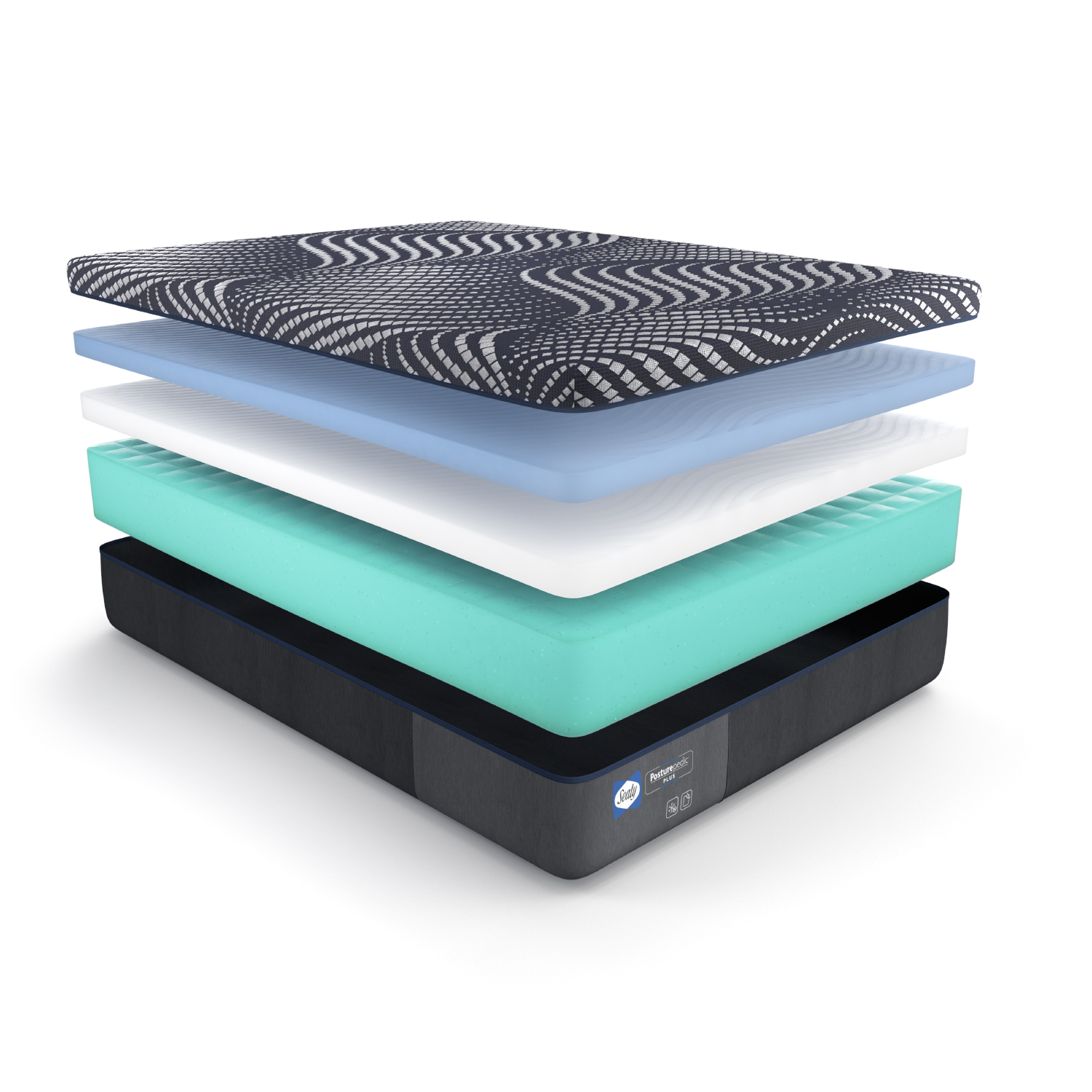

Mattress Guide
THE SLEEPZONE GUIDE TO CHOOSING THE RIGHT MATTRESS
Mattress Sizes
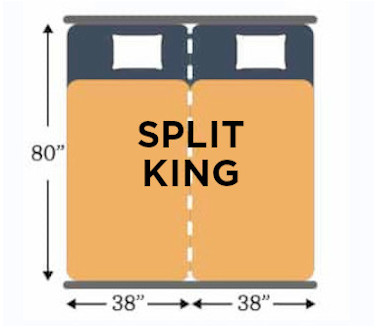
Split King
The dimensions of a split king are 76x80. The difference is that a split king is made up of two twin xl mattresses as opposed to a single king mattress that is one piece,. There are a few different reasons for getting a split king. One reason is that a split king allows people who share a bed to have two different mattress types. Perhaps one person sleeps better on a soft mattress and the other person on a firm. A split king will allow both people to have the comfort they desire by simply purchasing two different twin xl mattresses. Also, a split king mattress can be used in conjunction with an adjustable base. One person may prefer to have their head elevated to reduce snoring while the other lies flat.
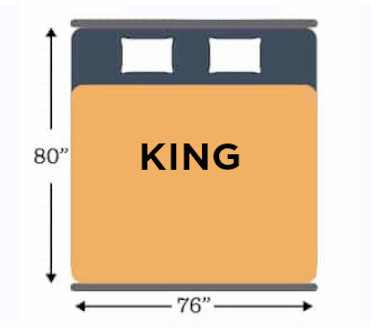
King
The dimensions of a King size mattress measure 76″ x 80″, giving 16 more inches in width than a Queen, but no further space in length. King mattresses allow less partner disturbance and the most personal space (38 inches) for those who share a bed. King size mattresses are also ideal for individuals who prefer maximum sleeping space or who tend to sprawl during the night. These superior sized mattresses use a split foundation, meaning the foundation is made of two pieces placed side by side. Because of their spacious size, King size mattresses are not recommended to be used in rooms smaller than 12 x 12 square feet, with 13 x 13 square feet being the most suitable room size for a King mattress.
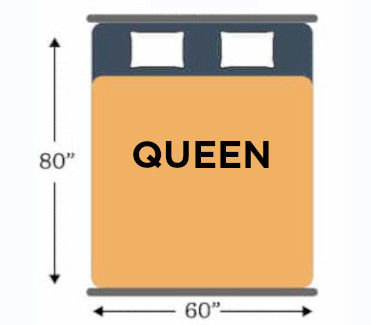
Queen
A Queen size mattress measures 60″ x 80″ and has become the most common mattress size for master bedrooms. These sizable mattresses are ideal for bedrooms 10 x 10 square feet and can comfortably accommodate co-sleeping couples or individuals who prefer a little extra room at night while offering more living space in the bedroom. For couples who share a bed, each person will enjoy 30 inches of personal space on a Queen size mattress. Coming in at 7 inches wider and 5 inches longer than a Full size mattress, the Queen size mattress is a better fit for tall individuals.
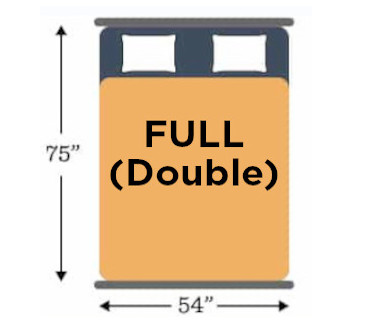
Full
Full size mattress dimensions are 54″ x 75″and are a great fit for teenagers or children. In order to fit a Full size mattress while still enjoying optimal living space, a bedroom should measure at least 9 x 9.6 square feet in size. However, the average room dimensions for a Full size mattress is 10 x 12 square feet. The Full size mattress, also known as a Double bed, is not actually double the size of a Single Bed, but only 15 inches wider and no longer. For co-sleeping adults, the Full size mattress will offer only 27 inches of personal space, making the Double Bed better for singles!
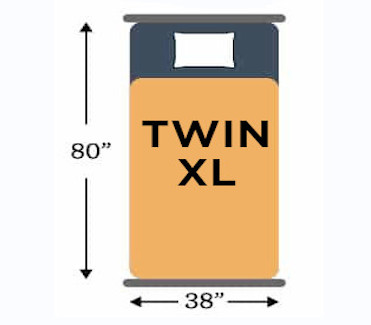
Twin XL
The dimensions of a Twin XL mattress is 38″ x 80″, making them 5 inches longer than a Twin mattress (the length of a standard King or Queen mattress), but no wider. A Twin XL bed can perfectly accommodate young children up to 12 years old, college dorm rooms or you home’s guest bedroom. To comfortably fit a Twin XL mattress in the bedroom, the dimensions of the room should measure no less than 9 x 9 square feet in size, but ideally will measure 8 x 10 square feet. The Twin XL is a great option for those who are tight on width in a space, but who would like to enjoy the extra comfort provided by the extended length of the mattress.
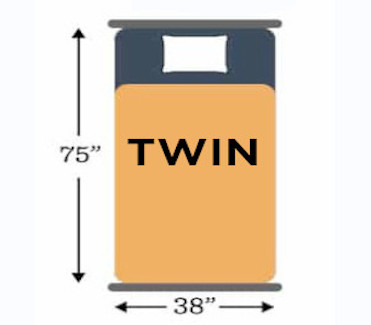
Twin
The smallest of all mattress sizes, the Twin size mattress measures 38″ x 75″ and is usually best for children ages 2-12 years old. The minimum bedroom size to adequately fit a Twin size mattress is 7 x 10 feet. However, a room should measure no less than 9 x 9 square feet if you plan to put two Twin mattresses in the space. Twin size beds are also a great option for bunk beds, allowing you to conserve floor space in the bedroom, while receiving the benefits of 2 beds if needed.
Style of Mattress
There’s no such thing as a one size fits all bed. Only you are going to know what type of mattress feels good to your body. There are beds that are firm. Some beds are soft. And some have foam and some have springs. So what’s the real difference between them all? Let’s figure it out.
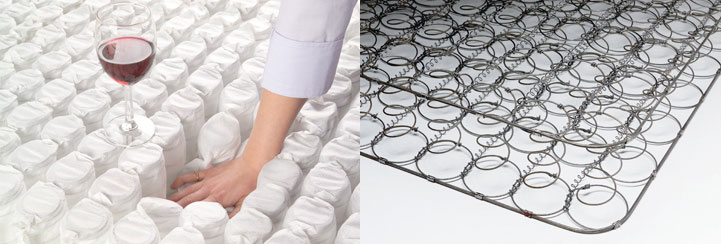
Innerspring/Pocketed Coil
Traditional spring (Innerspring) mattresses have been around over 100 years. These beds are the most popular style of mattress due to their affordability and support to a variety of sleepers. The basic design of an innerspring mattress is metal springs covered by padding and materials. Another style of innerspring mattress is a pocket coil. Pocket coils are springs wrapped individually in a fabric sleeve. This allows them to react to pressure independently instead of all together, which minimizes movement and allows for a more buoyant feel. There are some drawbacks to an innerspring mattress. They do have a tendency to sag, short lifespan, noisiness, and lack of motion isolation.
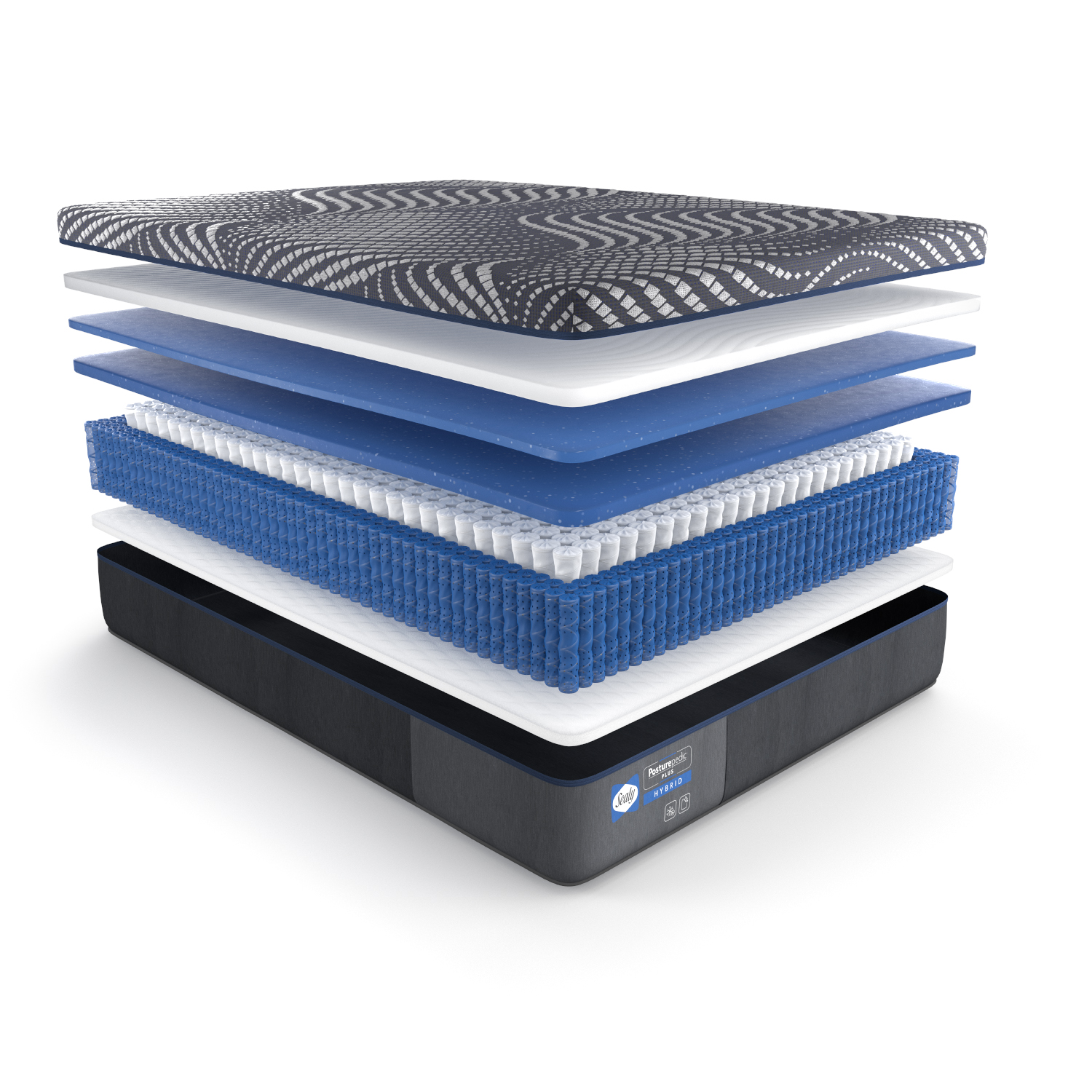
Hybrid
A hybrid mattress combines a pocketed coil support system with one or more types of foam, such as polyurethane, memory (viscoelastic) or latex, as well as foams that contain gel or other materials. If you are thinking about switching from an innerspring to a memory foam, this style of mattress would be something more inbetween.
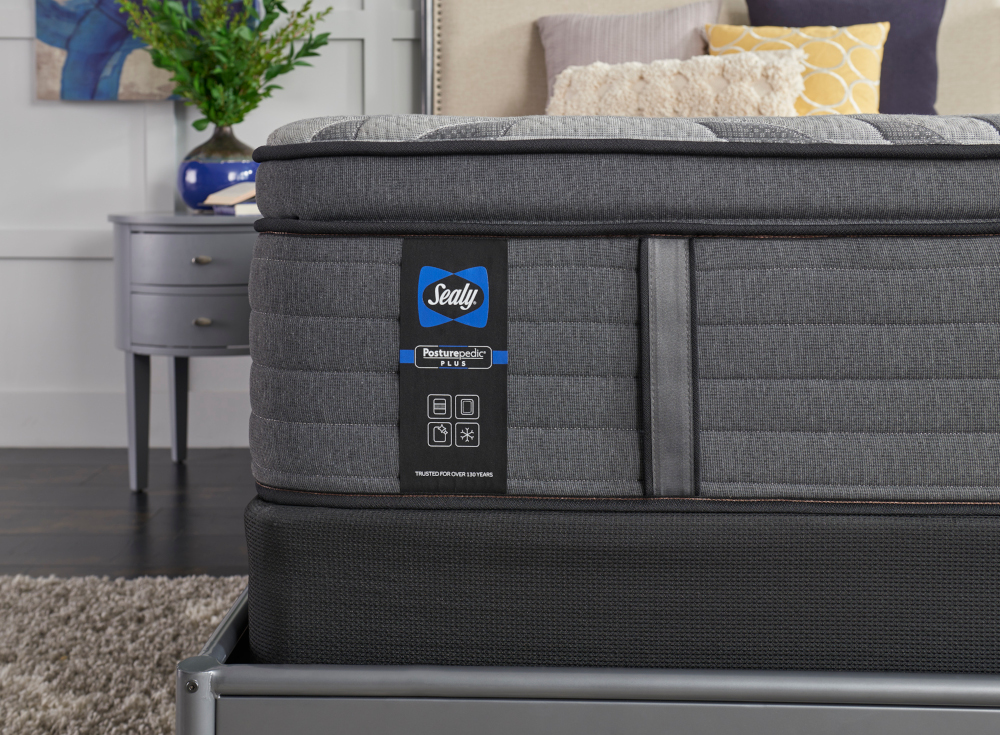
PILLOW-TOP
Pillow-top mattresses are a good choice for those who want a softer and fluffier mattress feel, but who also want firm support. Since pillow-top mattresses are generally innerspring mattresses with a softer top, those who like the support and feel of an innerspring mattress might also enjoy a pillow-top mattress.
